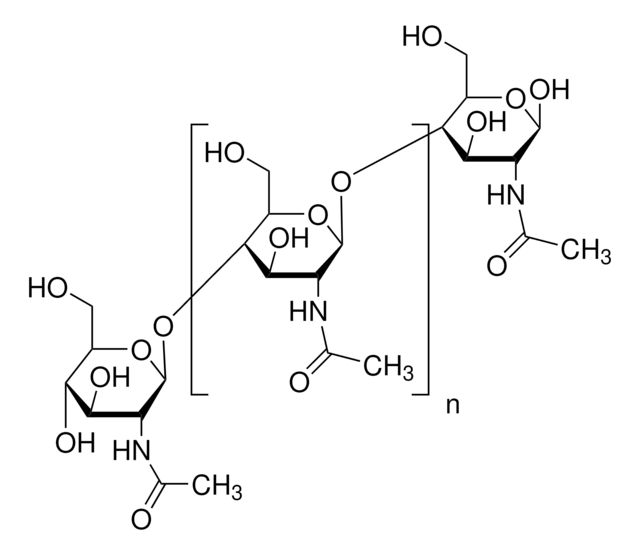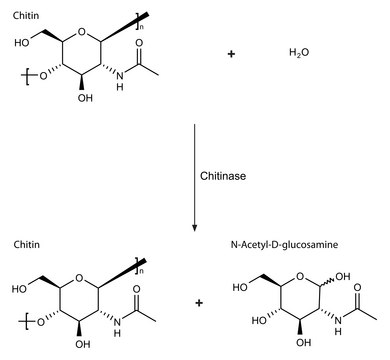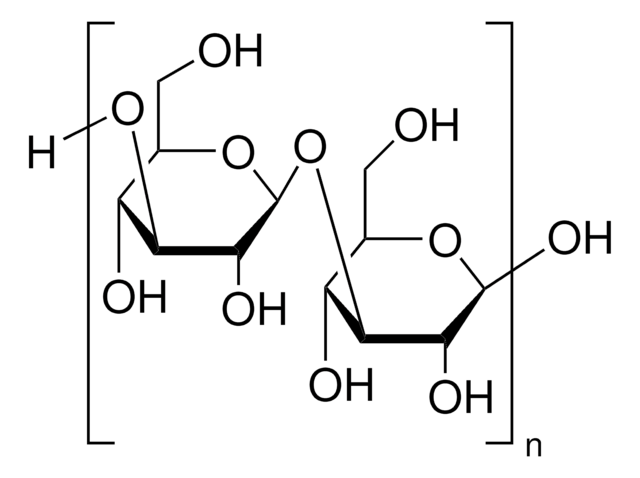C3020
Chitin azure
chitinase substrate
Synonym(s):
Colloid chitin azure
Sign Into View Organizational & Contract Pricing
All Photos(2)
About This Item
UNSPSC Code:
12352204
NACRES:
NA.32
Recommended Products
Quality Level
form
powder
General description
Chitin azure is sensitive, feasible and reproducible low cost substrate, which is used for the assay of chitinase activity.
Application
Chitin azure has been used as a substrate to determine chitinase activity.
Other Notes
Chitin from crab shells covalently linked with Remazol Brilliant Violet 5R (RBV) dye.
Substrates
A substrate for chitinase
Storage Class Code
11 - Combustible Solids
WGK
WGK 3
Flash Point(F)
Not applicable
Flash Point(C)
Not applicable
Personal Protective Equipment
dust mask type N95 (US), Eyeshields, Gloves
Choose from one of the most recent versions:
Certificates of Analysis (COA)
Lot/Batch Number
Don't see the Right Version?
If you require a particular version, you can look up a specific certificate by the Lot or Batch number.
Already Own This Product?
Find documentation for the products that you have recently purchased in the Document Library.
Natalia A Ferreri et al.
Anais da Academia Brasileira de Ciencias, 93(suppl 3), e20201159-e20201159 (2021-09-02)
This study analysed the mycobiota on exoskeleton debris of the crab Neohelice granulata collected from an alkaline salt marsh and assessed the in vitro enzyme ability of selected isolates at different temperatures and pH. Exoskeleton fragments were incubated in moist
Issues in Biologicals, Therapies, and Complementary and Alternative Medicine (2012)
Yang Han et al.
Journal of chemical ecology, 47(7), 689-706 (2021-06-01)
A large percentage of crop loss is due to insect damage, especially caterpillar damage. Plant chitinases are considered excellent candidates to combat these insects since they can degrade chitin in peritrophic matrix (PM), an important protective structure in caterpillar midgut.
NEW SUBSTRATES FOR USE WITH CHITINASES.
R H HACKMAN et al.
Analytical biochemistry, 8, 397-401 (1964-07-01)
Supansa Pantoom et al.
BMC biochemistry, 9, 2-2 (2008-01-22)
Vibrio carchariae chitinase A (EC3.2.1.14) is a family-18 glycosyl hydrolase and comprises three distinct structural domains: i) the amino terminal chitin binding domain (ChBD); ii) the (alpha/beta)8 TIM barrel catalytic domain (CatD); and iii) the alpha + beta insertion domain.
Our team of scientists has experience in all areas of research including Life Science, Material Science, Chemical Synthesis, Chromatography, Analytical and many others.
Contact Technical Service



